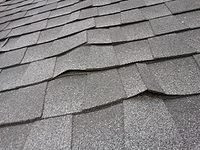Grant Program Launched to Provide Women with Custom-Fitting Harnesses

Photo courtesy of Autodesk.
SAN RAFAEL, Calif. — In October 2019, tragedy struck a North Carolina city when a volunteer firefighter and roofing contractor fell 15 feet to her death while working on a roof.
This heartbreaking accident could have been avoided if she had been wearing a safety harness, but even that may not have prevented life-threatening injuries — most safety harnesses are not built to properly fit women.
To help address this, Autodesk Construction Solutions is funding a grant program with the Associated General Contractors of America (AGC), one of the largest construction trades organizations, to provide select, in-need member contractors with fall protection harnesses sized for women who work at heights.
“The construction industry agrees safety must be everyone’s priority, but we also need to recognize when safety needs aren’t being met for some workers,” said Allison Scott, director of Autodesk Construction Solutions. “Technology is improving jobsite safety, but it’s not a silver bullet.”
The program will fund the purchase of approximately 300 fall protection harnesses sized for women. AGC members can apply for the grants until the application window closes on Jan. 10, 2020. Winners will be honored at the AGC’s annual convention, held March 9-12, 2020 in Las Vegas. Click here to apply for a grant.
Ill-fitting personal protection equipment can range from uncomfortable to outright dangerous. A fall protection harness that is too loose may still catch a woman if she falls from a roof, but might injure her neck or shoulders in the process. The ramifications go beyond the injured worker — the contractor incurs lost time, productivity and possibly a costly worker’s compensation claim.
Additionally, fines from the Occupational Safety and Health Administration (OSHA) can be quite hefty for exposing employees to fall hazards. A contractor in Indiana was hit with $220,249 in penalties for repeated fall violations in August. OSHA states falls continue to be the most cited violation in the construction industry.
“The industry needs more people, and women must feel safe and welcome on jobsites if we want them to choose a career in construction. Ultimately, when we address safety for women, we improve safety for everyone,” Scott said.
The grant program arrives at a time where 68 percent of roofing contractors reported the biggest challenge facing the industry is a lack of qualified workers, as reported in RC’s 2019 State of the Industry. The Bureau of Labor Statistics reports women represent approximately 10 percent of the overall construction labor force.
By acknowledging the benefits of a gender-diverse workforce, such as providing proper safety equipment, roofing contractors can work toward attracting more women to the industry.
“One of the most effective ways to successfully recruit more women into high-paying construction careers is to make sure firms are able to provide safety equipment that makes them even safer,” said Stephen E. Sandherr, CEO of AGC. “We want to leverage these grants to encourage our member firms to provide a wider range of safety equipment and continue to expand the diversity of our workforce.”
Applicants must provide company information, injury and illness incidents from 2017 to 2019 (if able), why they are applying for the grant, and any diversity and inclusion efforts.
For more information and to apply for the grant, visit AGC.org.
Looking for a reprint of this article?
From high-res PDFs to custom plaques, order your copy today!






